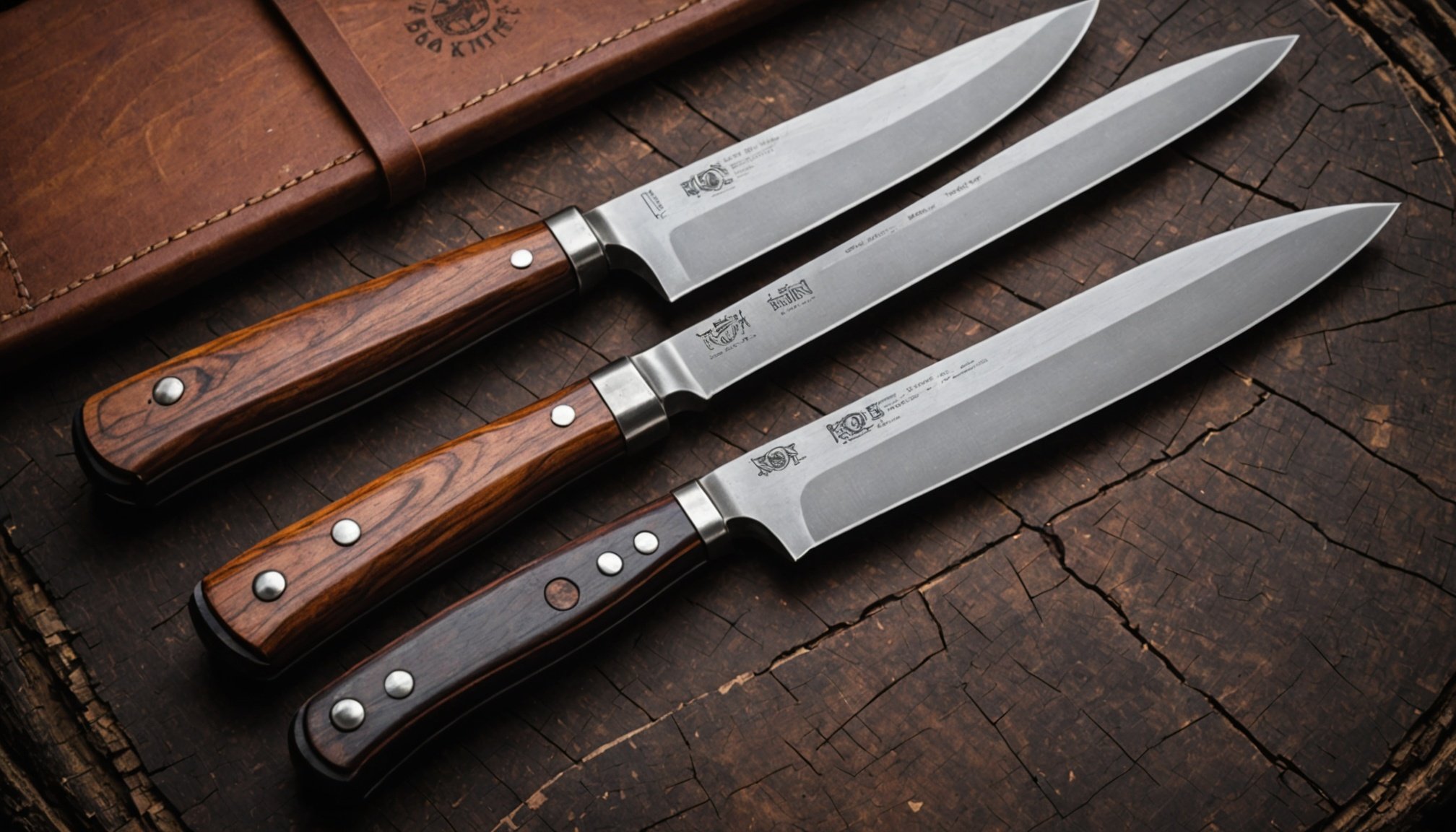Morta wood knives blend timeless craftsmanship with rare natural beauty, creating cutlery that stands apart. Each piece tells a story of careful handcrafting and unique materials, appealing to collectors and daily users alike. Understanding the art behind these knives deepens appreciation for their design and function, transforming ordinary cutting tools into treasured works of art.
Overview of Artisanal Cutlery and Luxury Knife Brands
Artisan cutlery emphasizes craftsmanship and traditional techniques, creating durable, unique blades admired by chefs and enthusiasts alike. The surge in demand reflects a desire for high-quality, handcrafted kitchen tools that combine aesthetic appeal with performance.
Also read : How do you achieve the perfect texture for a Scottish shortbread?
Brands like Artisan Cutlery and CJRB exemplify this trend, melding innovation with artisanal methods. Artisan Cutlery excels in using premium materials and collaborating with designers such as Ray Laconico and Mike Snody, producing limited editions like the Satyr. These knives feature refined design and advanced lock mechanisms, appealing to collectors.
CJRB offers more accessible options—balancing craftsmanship and affordability, with products suited for everyday use. Both brands engage communities, inviting user input and offering exclusive releases, ensuring their products meet evolving needs. They uphold traditional forging techniques while exploring modern blade designs—a perfect harmony between heritage and innovation.
In parallel : Unveil unique morta wood knives: the beauty of artisanal cutlery
You can view more details on this page: Click for more details
Materials, Craftsmanship, and Design Innovations in Artisanal Cutlery
Premium Materials and Unique Blade Designs
In the premium segment of handcrafted knives, premium knife materials set a benchmark for performance and longevity. Many artisan knife makers employ top-tier steel types for artisanal knives, such as AR-RPM9, which enhances blade durability and resistance to corrosion. These specialty materials are matched by decorative morta wood handles, presenting a tactile and visually distinct experience for any collector or chef.
Distinctive unique blade designs—ranging from hand-polished finishes to dramatic textured surfaces—reflect the essence of artisanal knife making. Collaborations with master designers, including Ray Laconico and Mike Snody, further elevate the art form, bringing tailored blade shapes and exclusive, small batch cutlery to those seeking collectible cutlery with tangible value.
Traditional and Modern Forging Techniques
Artisan forged blades are shaped using both hand-forged kitchen tools and contemporary charcoal forging methods, highlighting a dedication to sustainable knife craftsmanship. Each technique is chosen to maximize edge retention and blade strength through advanced heat treatment processes.
Innovations in steel tempering and the integration of proprietary steel technology allow artisan knife makers to surpass industry standards, producing heirloom-quality knives and custom kitchen knives that excel in everyday culinary tasks. The result is a blend of function and artistry—hand-forged steel blades that are as durable as they are beautiful.
Craftsmanship, Handles, and Crafting Unique User Experiences
Morta Wood and Handle Customization
Morta wood handles distinguish each handcrafted knife with a story rooted in ancient French wetlands. This morta wood provenance ensures every piece is not only visually appealing but also built to last. Artisans apply advanced handle carving methods—each handle starts as a solid morta wood block, then skilled hands shape it for a tailored knife grip, balancing practical ergonomics with refined form. Preference for morta burl wood for handles is on the rise, especially among those seeking bespoke cutlery sets that fuse aesthetic intrigue with distinct tactile comfort.
The convergence of artisan handle carving and ergonomic knife design provides measurable advantages: users benefit from oriented hand-feel, reduced fatigue, and reliable grip, whether using kitchen cutlery or collectible cutlery. For knife collectors and enthusiasts, handle customization further elevates the value and allure of morta wood handles in artistic kitchen knife handles and functional art knives.
Artistic Finishes and Collector-Oriented Features
Hand-polished blades and artistic finishes are hallmarks of premium knife materials in the artisan forged blades space. Limited edition knives, vintage knife inspiration, and unique blade designs all contribute to the appeal of heirloom-quality knives and collectible cutlery. Knife makers emphasize balance and weight, optimizing the crafting blade balance and blade tang for agile handling—a core trait expected by anyone valuing artisanal knife making and premium handmade steak knives.
Buying Guides, Maintenance, and Community Engagement in Artisanal Cutlery
Care, Maintenance, and Sharpening
For caring for handcrafted knives, always hand-wash and dry them immediately to prevent corrosion and preserve unique blade designs. Avoid dishwashers; they can damage morta wood handles and premium knife materials. Regular oiling of morta wood handles ensures durability and age-defying beauty.
Sharpening stones for handmade knives, especially natural or ceramic types, maintain the integrity of hand-forged steel blades. Use gentle, consistent strokes for sharpening—never harsh pressure—to protect artistic blade finishes and retain cutting edge innovation. Hand-polished blades benefit from finishing on a fine-grit stone, maintaining both edge retention and aesthetics.
Blade durability factors include steel types for artisanal knives and proper use: reserve specialty cooking knives for appropriate tasks. If chips or dull spots appear, seek artisanal knife restoration or professional sharpening services common to community-focused artisan knife makers.
Community, Market Trends, and Purchase Tips
The artisan knife marketplace thrives on limited edition knives, small batch cutlery, and collector demand. Engage with artisan knife makers directly during handmade knife festivals or via online communities. When choosing bespoke cutlery sets, consider usage style, functional art knives, and ergonomic knife design.
Market demand often favors hand-forged kitchen tools and luxury kitchen accessories, reflecting both traditional knife forging and cutting precision in artisanal knives.









